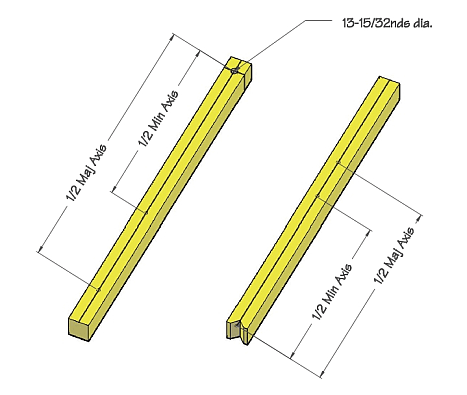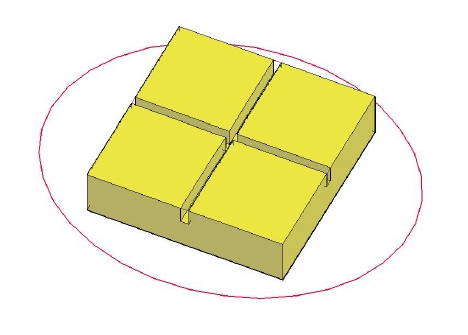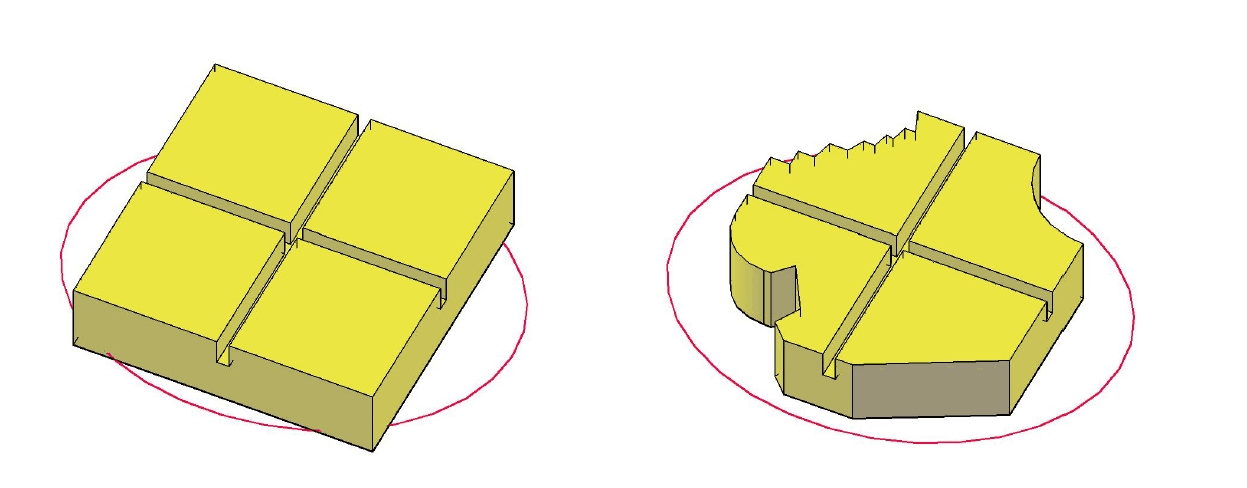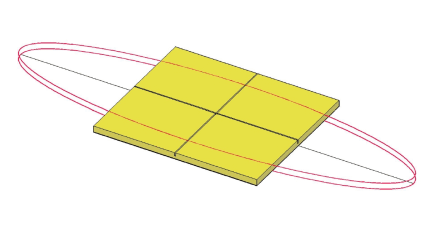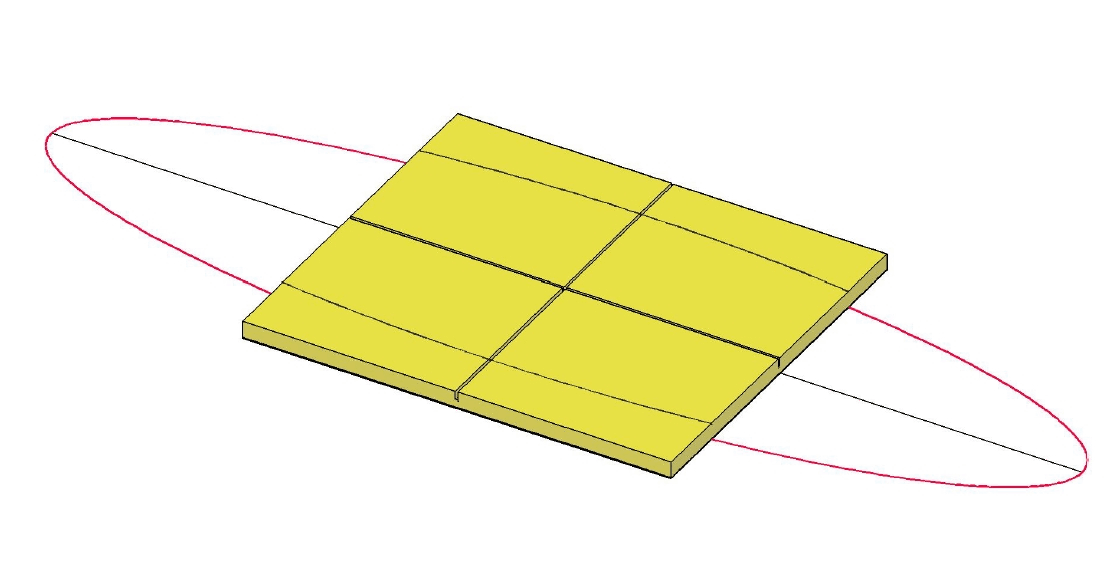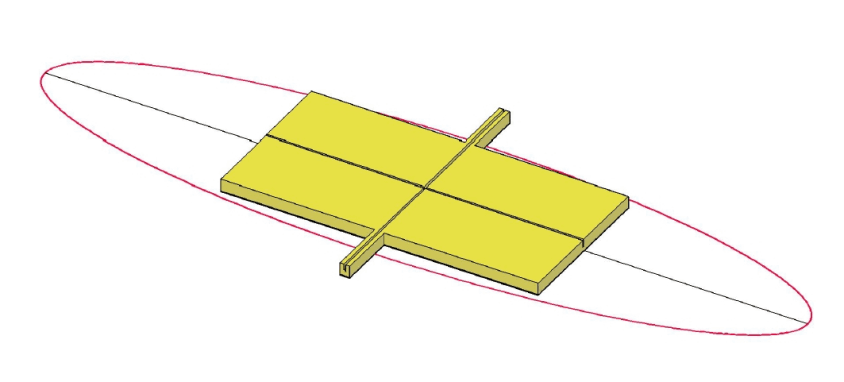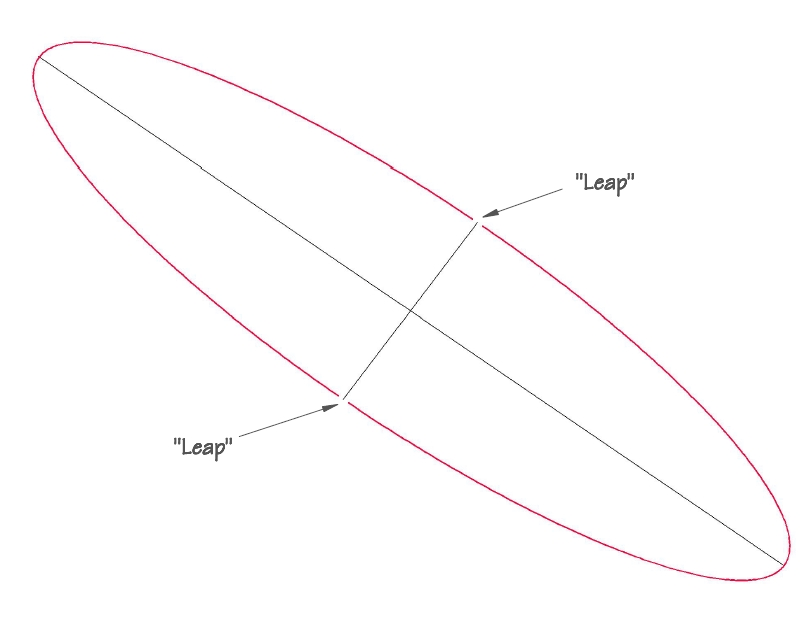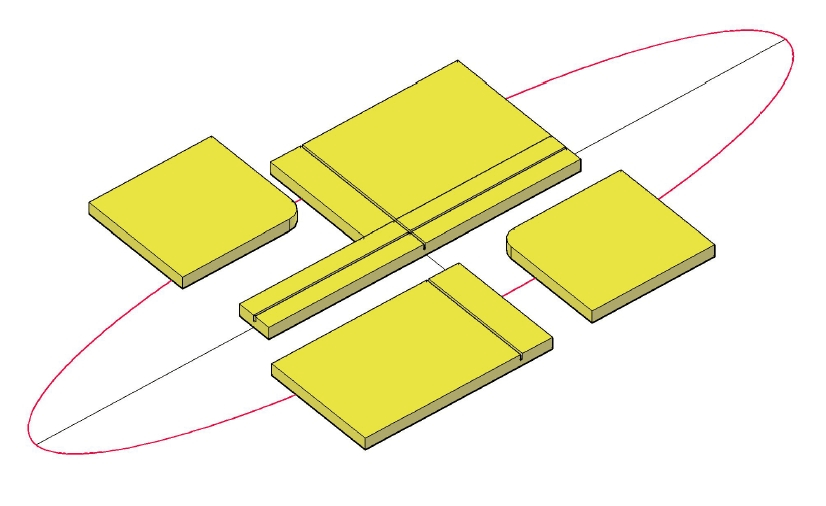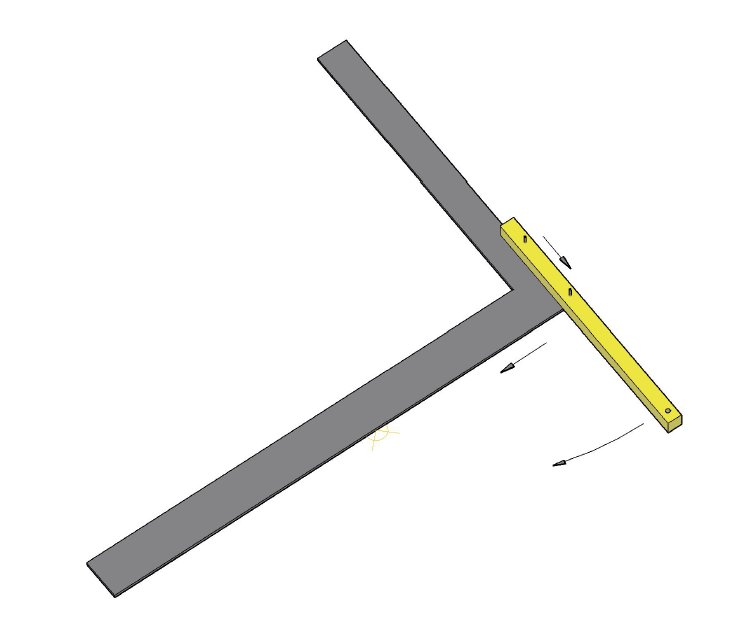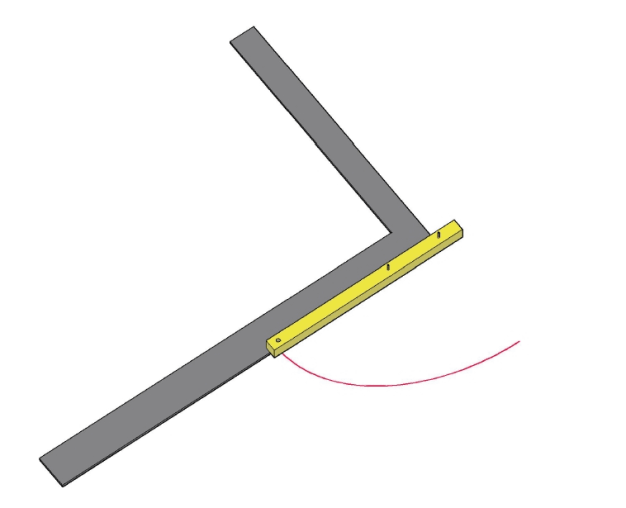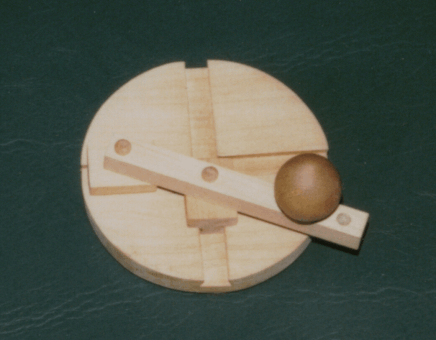Next, a little 'rithmatic (ambition, distraction, uglification and derision). An ellipse is defined by its greatest extents, its major and minor axes (1 axis, 2 axes). An ellipse also has two foci (1 focus, 2 foci) Foci are the result of a mystical union between ½ the major axis; as an arc, struck from either terminus of the minor axis. Luckily we don't have to foc with either of them.
All we need to know is “what is ½ the major axis” and “what is ½ the minor axis.” If you've got numbers that are easy to measure, cool. If the numbers are wild; use the bisector gag to obtain precise measurements.)
Transfer these to the ellipstick (each measured from the center of the pencil hole - why the hole is exactly 1/2" from the end.)
Drive a 4d finish nail straight into the ellipstick at each of those marks and clip off the heads leaving the pins just scant of 3/8” proud. Sweeten the ends with a kiss of a mill file.
Mark out the major axis on the work or layout. Bisect that distance with a perpendicular on which you locate the minor axis.
Next you need to construct the track block. This wants to begin as a true square piece of ¾ scrap, with no voids, that is twice the difference between ½ the major and ½ the minor axes +1/4”.
This done, lower the tablesaw blade so it only takes a 3/8”deep kerf and re-set the fence so the blade splits the two mid-lines of the square. You should end up with something that looks like this.
